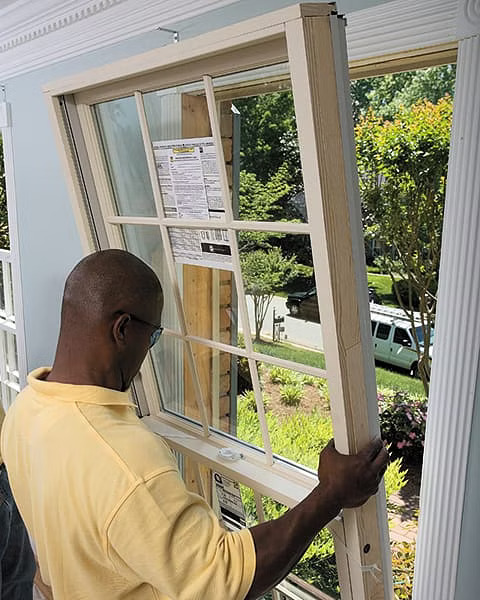Selecting the right Windows Replacement North TX is crucial for optimizing comfort, energy efficiency, and durability in your home. Different climates present unique challenges and considerations, from extreme temperatures and humidity levels to high winds and precipitation.

In this comprehensive guide, we’ll explore the factors to consider when choosing windows for different climates, the best window types for specific weather conditions, and strategies for maximizing comfort and energy efficiency year-round.
Factors to Consider
Before selecting windows for your climate, consider the following factors:
1. Temperature Extremes
Evaluate the typical temperature range in your climate, including both summer highs and winter lows. Choose windows with appropriate insulation properties to help maintain comfortable indoor temperatures and minimize heating and cooling costs.
2. Humidity Levels
Consider the humidity levels in your climate, as excessive moisture can lead to condensation, mold growth, and wood rot. Select windows with features such as low-E coatings and insulated frames to reduce condensation and improve overall durability.
3. Wind Exposure
Assess the exposure of your home to high winds, storms, and inclement weather. Choose windows with strong frames, impact-resistant glass, and secure hardware to withstand wind pressure and debris impact.
4. Sun Exposure
Take into account the orientation of your home and the amount of sunlight it receives throughout the day. Select windows with features such as low-E coatings and UV protection to minimize solar heat gain, reduce glare, and protect interior furnishings from sun damage.
Best Window Types by Climate
Now, let’s explore the best window types for different climates:
1. Hot and Dry Climates
In hot and dry climates with high temperatures and low humidity levels, consider the following window types:
- Low-E Windows: Low-E (low-emissivity) windows feature a special coating that reflects infrared heat while allowing visible light to pass through, helping to keep interiors cooler and reduce cooling costs.
- Casement Windows: Casement windows, which open outward like a door, provide excellent ventilation and airflow, allowing hot air to escape and cool breezes to enter.
- Tinted or Reflective Glass: Tinted or reflective glass can help reduce solar heat gain and glare, keeping interiors comfortable and protecting furnishings from sun damage.
2. Cold and Snowy Climates
In cold and snowy climates with low temperatures and high precipitation, consider the following window types:
- Double or Triple Pane Windows: Double or triple pane windows feature multiple layers of glass separated by insulating gas fills, providing superior insulation and reducing heat loss.
- Gas-Filled Windows: Gas-filled windows, such as those filled with argon or krypton gas, offer enhanced thermal performance by minimizing heat transfer through the window panes.
- High-Quality Weatherstripping: High-quality weatherstripping and seals help prevent air leakage and drafts, improving energy efficiency and comfort during cold weather.
3. Humid and Coastal Climates
In humid and coastal climates with high humidity levels and exposure to salt air, consider the following window types:
- Vinyl or Fiberglass Frames: Vinyl or fiberglass frames are resistant to moisture, corrosion, and salt air, making them ideal for humid and coastal environments where traditional materials may degrade over time.
- Impact-Resistant Glass: Impact-resistant glass provides added protection against windborne debris, storms, and hurricanes, making it suitable for coastal areas prone to severe weather events.
- Proper Ventilation: Ensure proper ventilation and airflow to prevent moisture buildup and condensation, which can lead to mold growth, wood rot, and structural damage.
Strategies for Maximizing Comfort and Energy Efficiency
Regardless of your climate, there are several strategies you can employ to maximize comfort and energy efficiency:
1. Proper Installation
Ensure proper installation of windows by hiring experienced professionals who follow industry best practices and manufacturer guidelines. Properly installed windows minimize air leakage, drafts, and energy loss, optimizing comfort and energy efficiency.
2. Energy-Efficient Features
Choose windows with energy-efficient features such as low-E coatings, insulated frames, multiple glazing layers, and gas fills. These features help reduce heat transfer, improve insulation, and lower heating and cooling costs year-round.
3. Regular Maintenance
Perform regular maintenance on your windows to ensure optimal performance and longevity. Clean glass surfaces, lubricate hardware, inspect seals and weatherstripping, and address any issues promptly to prevent air leakage, moisture infiltration, and deterioration.
Conclusion:
Choosing the best Windows Replacement North TX is essential for optimizing comfort, energy efficiency, and durability in your home. By considering factors such as temperature extremes, humidity levels, wind exposure, and sun exposure, you can select window types that meet the specific needs of your climate. Whether you live in a hot and dry climate, a cold and snowy climate, or a humid and coastal climate, there are window options available to enhance comfort and energy efficiency year-round.
North Texas Home Exteriors
1-817-201-6800
